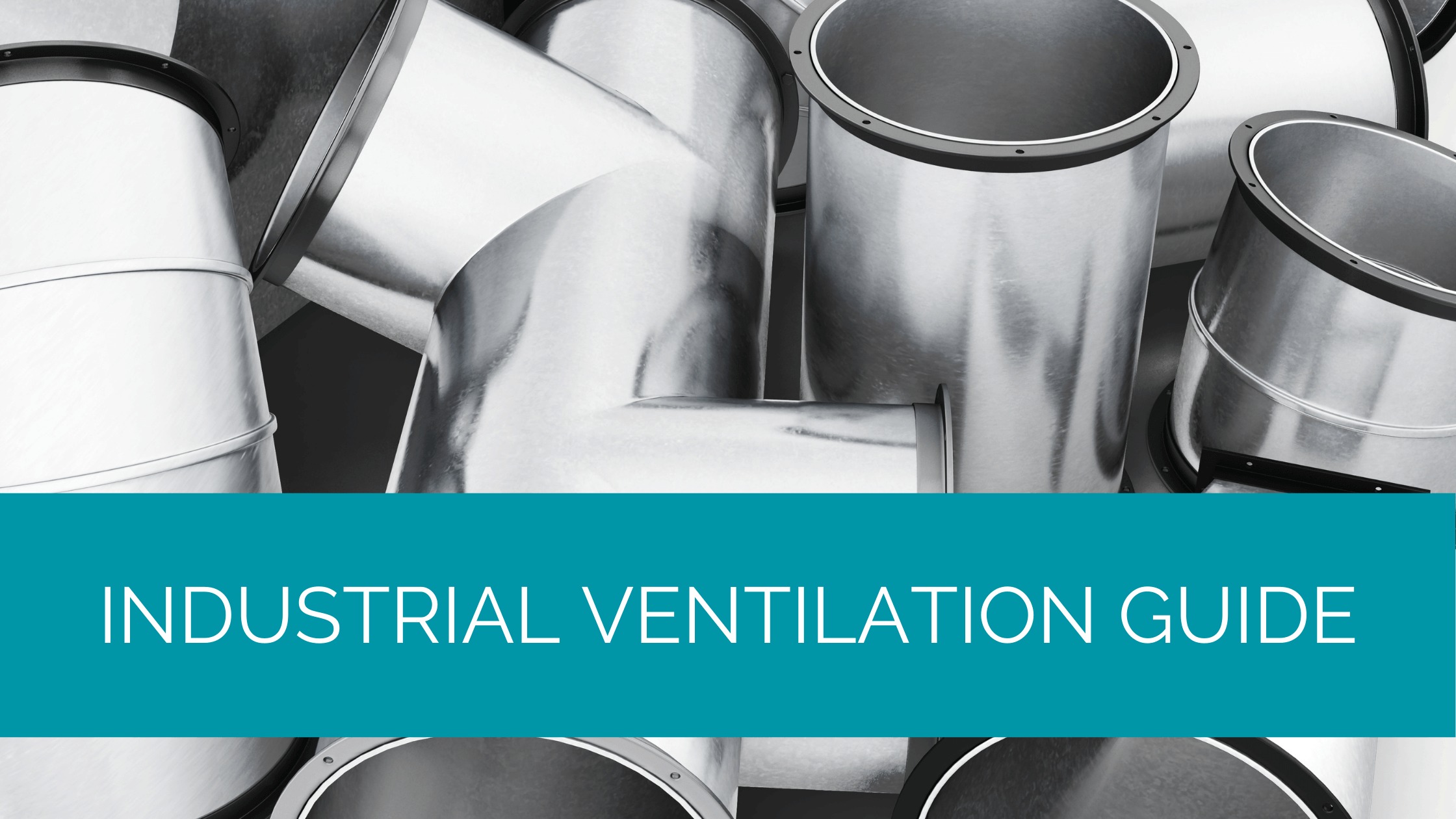Ventilation is the process of infilling space with fresh outdoor air while at the same time extracting contaminated indoor air to the outside.
Ventilation is an essential component of workplace safety across all industries. These systems play the critical role of reducing or eliminating contaminants that range from pathogens, dust, vapour, and fumes from indoor air.
Industrial ventilation entails using planned and powered ventilation systems and processes that ensure that the extraction of stale and or contaminated air is effective and efficient. Selecting and or using the right ventilation for your industry and workspace is critical.
Besides providing your workforce with excellent air quality while working, incorporating industrial ventilation into a building is a requirement stipulated in the law. For instance, the Health and Safety Executive (HSE) recommends using local exhaust ventilation to reduce or eliminate workers’ exposure to mist, dust, fumes, gas, and vapour in the workplace.
Contents
What Is an Industrial Ventilation System?
Industrial ventilation is any system and process used to keep indoor air clean, fresh, and devoid of contaminants.
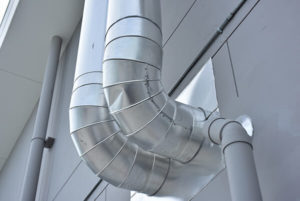 It might be as simple as opening windows to let in outdoor and exhaust indoor air. It can be as complicated as using large-scale specialised mechanical ventilation systems.
It might be as simple as opening windows to let in outdoor and exhaust indoor air. It can be as complicated as using large-scale specialised mechanical ventilation systems.
Mechanical systems are commonly fixture in industrial ventilation. Typical mechanical industrial ventilation systems fall into three different categories, including:
- General – These are systems designed with no specific requirement. These systems and processes are used for ventilation and conditioning indoor space or processes only.
- Specialist Systems – These are systems designed and built to meet specified operational requirements, such as low air velocity.
- Large Scale – These are used when a large space or large volumes of air are involved.
The choice between the three systems depends on the specific environment and application. Additionally, the rate of contaminants release will also influence the type of ventilation system to purchase.
Ideally, the system and processes should have sufficient capability to extract and exhaust contaminant fast enough to keep indoor air clean and fresh. However, in typical cases, industrial ventilation solutions employ both natural and mechanical ventilation processes.
Why Do You Need Industrial Ventilation?
There are four main reasons for companies to invest in modern high-tech industrial ventilation systems:
Supply a Continuous Flow Air
An effective industrial ventilation system is essential for employees’ health, well-being, and safety. By providing a constant supply of sufficient air, an industrial ventilation system will ensure indoor air is safe and fresh to breathe. Finally, effective industrial ventilation will negate workers from suffering from lung problems and long-term life-limiting ailments.
Keep Humidity and Temperature at Comfortable Levels
 Installing and using effective industrial ventilation will negate workers’ risk of heatstroke. Working in an enclosed environment exposes workers to high temperatures caused by the greenhouse effect, whereby solar radiation is trapped indoors by the structure. The constant supply and extraction of air reduce heat accumulation while keeping air humidity within the comfortable range.
Installing and using effective industrial ventilation will negate workers’ risk of heatstroke. Working in an enclosed environment exposes workers to high temperatures caused by the greenhouse effect, whereby solar radiation is trapped indoors by the structure. The constant supply and extraction of air reduce heat accumulation while keeping air humidity within the comfortable range.
Dilute and or Remove Airborne Contaminants
The constant air supply helps dilute airborne contaminants, reducing exposure to pathogens. This protects workers’ health. An effective industrial ventilation system will reduce dust build-up and dust lurking in the air in the same light.
Reducing dust in indoor space will help protect equipment and increasing its longevity. Dust accumulation on machinery circuitry, sensors, and mechanical parts can cause irrevocable damages, resulting in expensive repairs.
Abate Fire or Explosion Risks
The concentration of flammable fumes in indoor spaces increases the risk of an explosion. A high airflow consisting of fresh air injection and stale indoor air extraction will dilute the fumes, abating the explosion risk.
What Are the Benefits of an Industrial Ventilation System?
Stop Condensation
Accumulation of excessive humidity inside the building is terrible for everyone and everything. For starters, excessive air moisture can lead to mould growth while increasing metals and wood’s susceptibility to rusting and rotting, respectively.
Additionally, excessive moisture can give rise to some health issues such as respiratory ailments and allergic reactions. An industrial ventilation system will benefit companies by negating all these issues by simply supplying an ample flow of fresh air from the outdoors.
Regulate Air
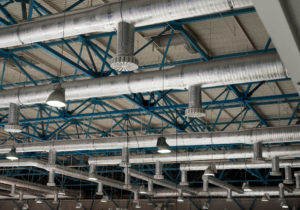 Another benefit of investing in an advanced ventilation system is the ability to control the airflow you get. While every building needs efficient and ample airflow, too much airflow for a particular building will mean expensive electricity bills with little benefits in return emanating from the excess airflow.
Another benefit of investing in an advanced ventilation system is the ability to control the airflow you get. While every building needs efficient and ample airflow, too much airflow for a particular building will mean expensive electricity bills with little benefits in return emanating from the excess airflow.
Health Benefits
There are positive health benefits for workers. Indoor air pollution coupled with poor ventilation can have an adverse health impact on occupants ranging from allergies, headaches, rashes, asthma, and much more. Investing in an efficient and effective industrial ventilation system will solve this issue, ensuring building occupants’ do not suffer the adverse health effects of indoor pollution.
Temperature Regulation
It is common for confined spaces to get too stuffy and hot quickly. Industrial ventilation benefits such confined spaces by evacuating the heat and humidity, ensuring the room is comfortable and relaxed. Ultimately, this makes new workers more productive.
Control Impurities
It is well known that indoor air tends to be more polluted than outdoor air. The accumulation of pathogens, pollutants, moisture, fumes, and odour makes the indoor air stale and unfit/unsafe for humans to breathe. An industrial ventilation system helps evacuate such polluted air and inject new fresh air from the outdoors.
What Are the Parts of an Industrial Ventilation System?
Air Filters
Air filters work in tandem with the silencer. While the silencer is designed to reduce the noise levels, air filters work to filter out particulate matter from the air.
Dampers
Dampers are central to controlling airflow. They regulate how much airflow goes in, and in emergency cases such as controlling fire or smoke, they can stop the airflow completely.
Dehumidifiers
Dehumidifiers are used in factories where the extraction of moisture from the air is vital for comfort or processes, especially where applications are sensitive to air moisture, for example, high tech electronics.
Dust Collectors
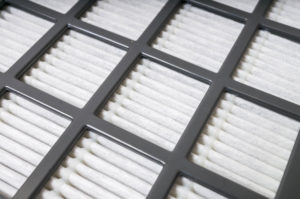 Dust collectors are the heavy-duty version of filters. The dust collectors use a vacuum system to collect all the dust particles and supply indoor space with clean air. Dust extraction is instrumental in plants whose activities produce a lot of dust particles considerably, for instance, sawdust from sanding wood.
Dust collectors are the heavy-duty version of filters. The dust collectors use a vacuum system to collect all the dust particles and supply indoor space with clean air. Dust extraction is instrumental in plants whose activities produce a lot of dust particles considerably, for instance, sawdust from sanding wood.
Fans
Fans are the single most important parts of industrial ventilation systems. They provide the airflow, which is central to ventilation. Whether you need positive, negative, or balanced pressure, you install fans with a precisely calculated airflow.
Louvres
Louvers are a typical feature of industrial ventilation. They let outdoor air in while screening for dust, insects, rain, and other such materials.
Silencers
Industrial ventilation consists of some moving parts that produce a lot of noise. Silencers work to dampen the vibration and reduce the noise levels, thereby meeting the noise restrictions imposed in different environments.
What Are the Different Types of Industrial Ventilation Systems?
There are two types of industrial ventilation system designs in use today – dilution ventilation and local exhaust ventilation. Each system has a unique working mechanism, but both systems deliver the same outcome – better indoor air quality.
What Is Dilution Ventilation?
As the name suggests, dilution ventilation systems are designed to dilute contamination by supplying a lot of fresh air from the outdoors using large fans, typically installed on the roof.
By supplying new air into confined spaces and extracting some of the air, the systems dilute contaminants to low levels, enough to ensure the air is safe to breathe.
What Is Local Exhaust Ventilation?
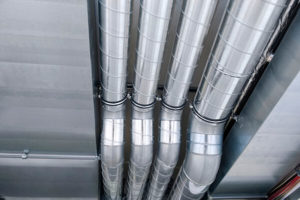 Local exhaust ventilation systems are designed to target the source of contamination, capture the contaminants, and evacuate them outside. To this end, the ventilation system uses small localised fans to catch the pollutants at the source and disposed of them outdoors.
Local exhaust ventilation systems are designed to target the source of contamination, capture the contaminants, and evacuate them outside. To this end, the ventilation system uses small localised fans to catch the pollutants at the source and disposed of them outdoors.
Consequently, these systems tend to be much smaller in size but can be quite complicated, especially in buildings with many contamination sources.
Given that the target contaminants sources, the local exhaust ventilation system is the preferred system in the following environments:
- The air contaminants are an incredibly harmful health risk.
- Processes produce large amounts of fumes, and dust emanates.
- There are few contaminants sources, and they are located near workers.
- To reduce the heating costs during winter owing to heat loss from the ventilation system.
What Are the Disadvantages of Any Ventilation System?
One disadvantage of the dilution ventilation system is its inability to provide clean, safe air to breathe when the outdoor air is more polluted than indoor air or when the ventilation system is polluted. After all, this particular system does not remove all the contaminants from the air.
Additionally, a dilution ventilation system tends to be slow to respond to sudden acute exposure to contaminants. It is important to note that a dilution ventilation system can hardly extract metal fumes, vapour, dust, and other gases. Finally, it can be ineffective in regulating temperature, thereby creating comfort issues.
The local exhaust, on the other hand, can be problematic when there are numerous contaminant sources.
What Are the Regulations for Industrial Ventilation Systems in the UK?
The Health and Safety Executive (HSE) regulations about general ventilation require all workplaces to have an adequate fresh air supply. In some cases, natural ventilation such as opening doors and windows is sufficient. Where necessary, planned powered ventilation systems should be installed, such as fabrication workshops.
The regulations also caution people against over-estimating small hoods’ capacity, using inadequate airflow, placing the hood too far away from the process, and always ensuring the extraction works.

